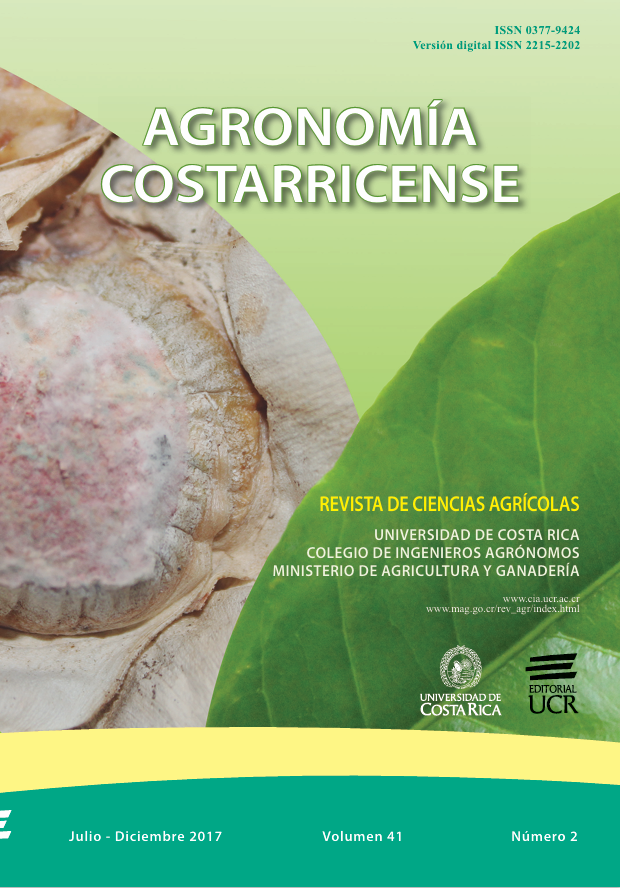Abstract
Pineapples are one of the top fruits exported from Costa Rica and its quality is affected by molds in the pedunculus at international markets. The objective of this research was to determine in pineapple fruits in the wax applied to the surface of fruits and in the air of cooling rooms, the frequency of the main fungi associated with the development of the molds in the pedunculus. From April 2012 to March 2013 monthly sampling was carried out in 2 packing houses in Sarapiquí and Puntarenas, Costa Rica. In each packing house, fruits were sampled after commercial processing for export and storage and the applied wax on the surface of the fruits and the air of the cooling rooms was sampled too. An analysis of the frequency of the main fungi recovered by the sampling in each zone for the peel and peduncle, the wax and the air was done. Also, it was compared the in vitro growth at 18ºC of the most frequent fungi at the end of the samplings. The most frequent fungi in cooling rooms, peduncle, peel from both zones and in the wax of Sarapiquí was Penicillium diversum showing the highest frequency, with values between 7% and 100%. While in the wax of Puntarenas, only the presence of a group of white mycelium fungi highlighted. P. purpureogenum, Penicillium sp., Talaromyces calidicanius and Cladosporium sp., were microorganisms also recovered with high frequency both in fruit and in the air of the cooling rooms of the both packing houses. P. purpureogenum, P. diversum and T. calidicanius were the species with the higher growth in vitro. It was concluded that the integrated management of P. purpureogenum, P. diversum and T. calidicanius is necessary if development of pineapple molds is to be avoided in the pedunculus.
Comments

This work is licensed under a Creative Commons Attribution-NonCommercial-NoDerivatives 4.0 International License.
Copyright (c) 2017 Agronomía Costarricense


